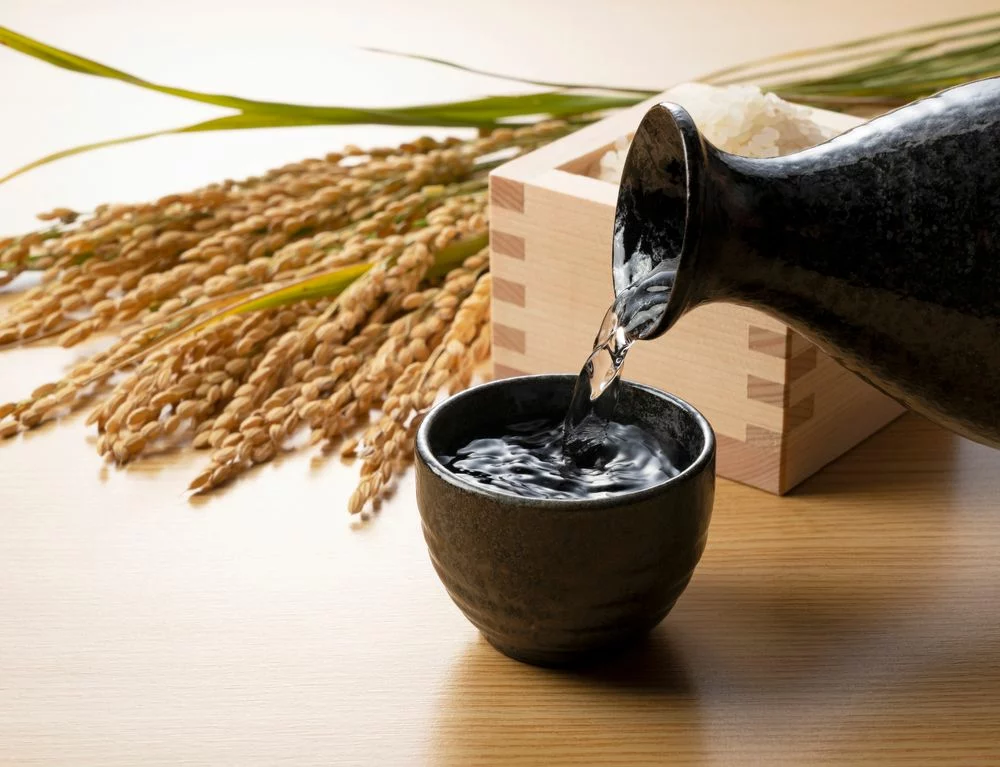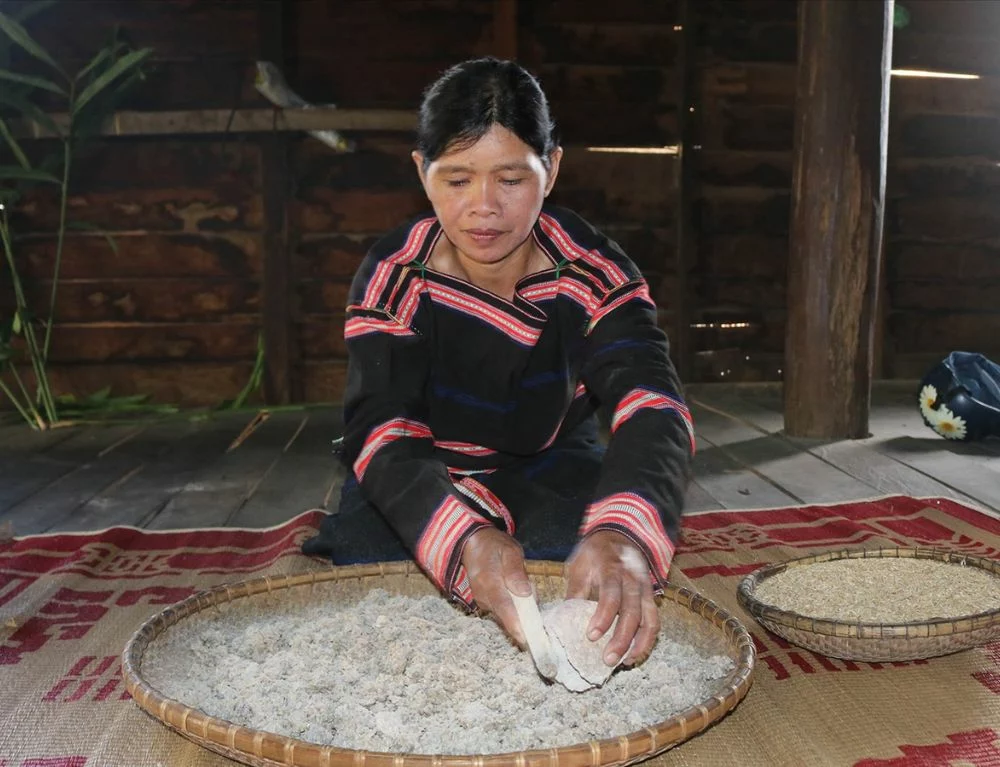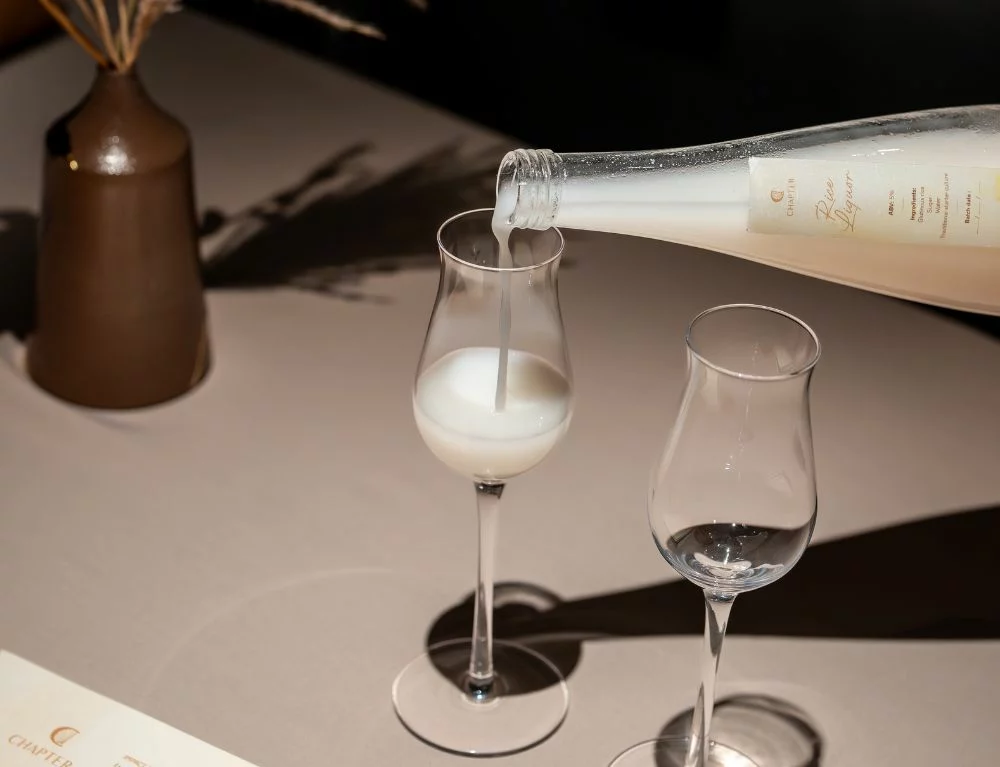In Vietnam, to raise a glass of alcohol is to raise centuries of tradition. At Chapter Dining, we believe that food and drink are vessels of cultural memory. This is especially true for Vietnamese rice wine — a beverage that carries stories of ancestry, celebration, and artisanal pride. In this chapter, we dive into the roots of Vietnamese rice wine, from its handmade process and regional expressions to its role in community and cuisine. And as always, we share how this traditional spirit inspires our own curated menu of local alcohol and pairings at Chapter Dining.
Table of Contents
What is Vietnamese rice wine?
Vietnamese rice wine, or “rượu gạo”, is a time-honored liquor distilled from fermented rice — usually white rice or sticky rice (gạo nếp in Vietnamese). Its appearance ranges from clear to slightly cloudy, depending on whether it has been filtered, and it carries a strong, earthy aroma. The alcohol content typically exceeds 40%, making it much stronger than the average Western wine.

Unlike Western wines made from grapes or other fruits, traditional Vietnamese local alcohol usually incorporate rice, corn, or even tropical fruits like lychee or guava, or herbs — reflecting the rich biodiversity of Vietnam’s agricultural landscape.
Among the ethnic minority groups of Northwest Vietnam, rượu cần — a traditional rice wine — is shared communally through long bamboo straws during festivals and celebrations. This ritual is more than a way to drink. It’s a symbol of unity, hospitality, and connection. With a low alcohol content and smooth finish, rượu cần is light, gentle on the body, and enjoyed by both men and women alike.
Because it’s often made in small batches at home or in rural villages, Vietnamese rice wine has historically remained a local treasure, less known internationally but deeply rooted in local life.
Handcrafted and sacred: The traditional brewing process
The making of traditional Vietnamese rice wine is a labor of both skill and spirit. Artisans in village communities — especially in Northern Vietnam — preserve family recipes passed down through generations.

The process includes:
- Selecting the rice – either white or glutinous, depending on the desired aroma and texture.
- Fermentation – rice is cooked, cooled, and then mixed with men lá (herbal yeast), often made from over 30 medicinal plants.
- Distillation – after days of fermentation, the rice mash is heated in clay jars, and the alcohol vapor is collected.
- Aging and filtering – some rice wines are aged to mellow their taste, others left unfiltered for a richer experience.
Famous rice wine villages in Northern Vietnam
- Mau Son rice wine from Lang Son: Produced by the Dao people, this rice wine is known for its crisp clarity and smooth, non-burning finish. Brewed with mountain spring water and rare herbal yeast, it’s considered a regional delicacy.
- Rice wine from Van Village, Bac Ninh: Nicknamed the “perfumed wine of the North”, Lang Van rice wine is celebrated for its mellow sweetness and clarity. It’s traditionally made from nếp cái hoa vàng (glutinous roundgrain rice) and herbal yeast.
- Kim Son rice wine from Ninh Binh: With its combination of 36 traditional medicinal herbs, this Vietnamese rice wine carries a spicy-sweet balance that reflects the soul of the former royal capital.
At these villages, rice wine is more than a drink — it’s an heirloom. Brewing is often a family affair, with each generation adding its own nuance to the ancestral formula.

Vietnamese rice wine in ceremonies and cuisine
Vietnamese rice wine is deeply woven into the country’s communal and ceremonial life. During Tet holidays, the Lunar New Year, it is respectfully offered to elders as a symbol of gratitude and longevity. Or in weddings and ancestral rites, rice wine is placed on family altars and shared among loved ones, honoring both past and present connections. The traditional toast, involves communal cups, with each sip affirming goodwill and unity.
In the world of cuisine, Vietnamese rice wine is a natural companion to bold, flavorful dishes. Its deep, warming character balances the richness of grilled or braised mains, cutting through fat while enhancing the umami of traditional ingredients.

At Chapter Dining, we bring this harmony to life through our local alcohol menu — featuring rice wines inspired by the culinary traditions of the North. For guests looking to explore beyond, we also offer a thoughtfully curated wine list and a non-alcoholic beverage menu to suit every preference.
Chapter Dining and the art of local alcohol
At Chapter Dining, we embrace the craft and ceremony of Vietnamese rice wine, not only as a cultural symbol but as a creative muse.
Inspired by the time-honored rice wines of Northern Vietnam, our team has sought out traditional distilling methods, learning from local artisans and reimagining them for the fine-dining experience. Our aim is to capture the authentic essence of Vietnamese rice wine while pairing it seamlessly with our modern, ingredient-driven menu.
Leading this vision is our Sommelier Tram — Vietnam’s Best Sommelier 2024 and Vice President of the Northern Vietnam chapter of the Vietnam Sommelier Association (VSA). Drawing on her deep knowledge of regional rice wine styles, she has crafted unexpected pairings that elevate each course at Chapter Dining. From earthy aged rice wines to herbaceous, aromatic infusions, every pour is designed to complement the complexity and story behind each dish.
For those seeking a non-alcoholic experience, we also craft non alcohol pairings that carry the essence of traditional rice wine. Guests can enjoy our local alcohol Vietnam menu alongside our tasting experiences, making each course a tribute to both terroir and tradition.

To drink Vietnamese rice wine is to share in a legacy — one of craftsmanship, celebration, and community. From the northern mountain villages to the tables of Chapter Dining, this traditional spirit continues to evolve while staying true to its roots. Every sip tells a story. We invite you to experience how Chapter Dining honors this heritage — one carefully chosen bottle at a time. Reserve your table and let our team take you on a sensory journey through Vietnam’s most enduring flavors.




